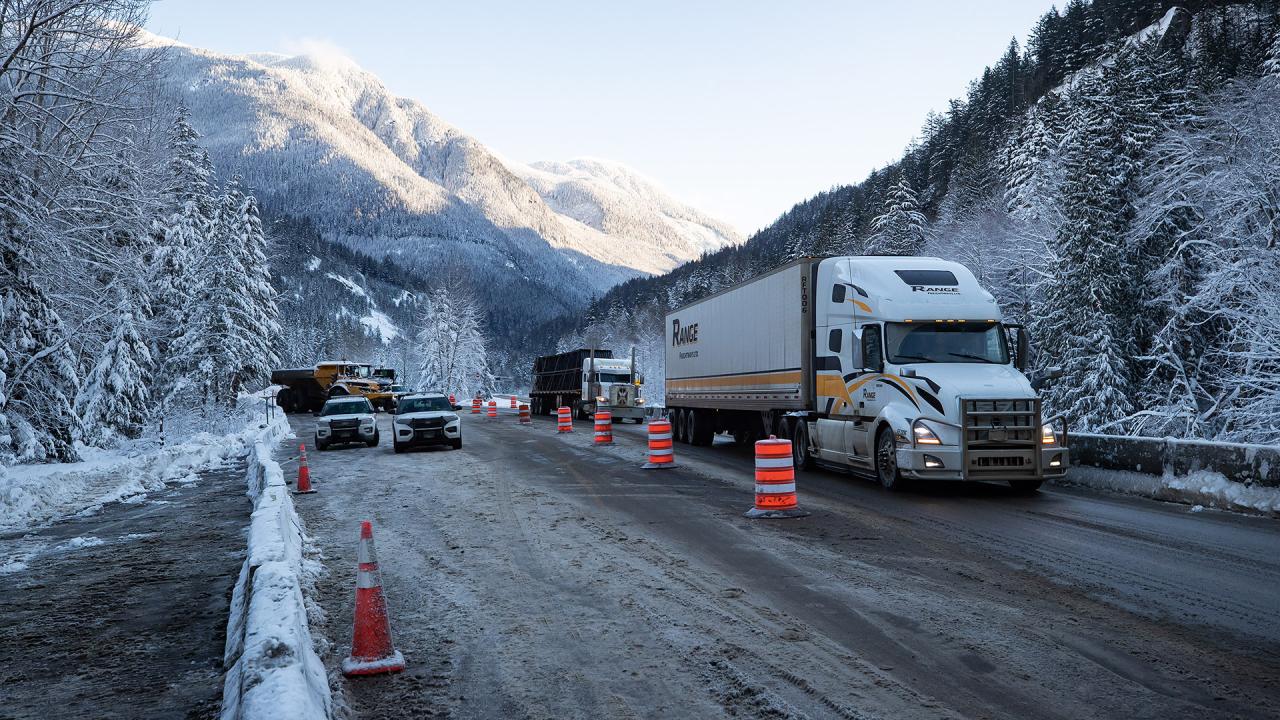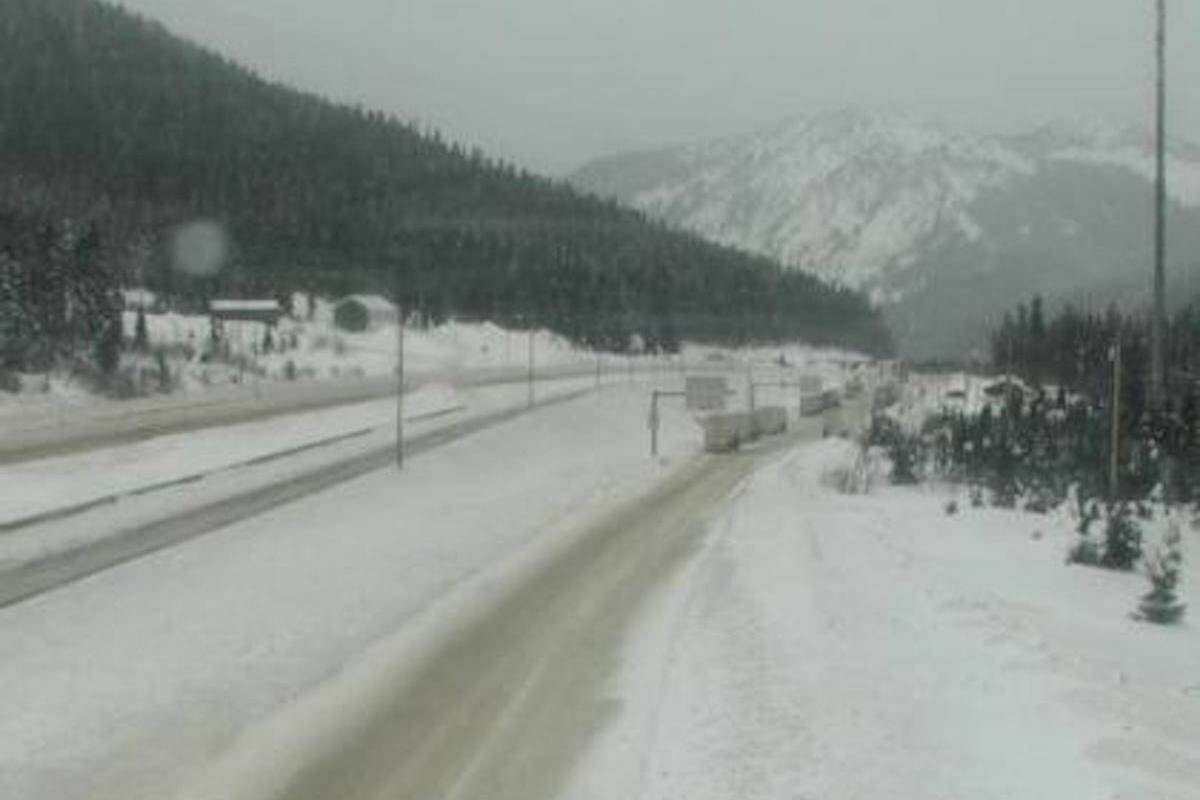Coquihalla weather cameras provide a crucial real-time view into the often unpredictable conditions of the Coquihalla Highway. This mountainous route, known for its stunning scenery, also presents significant challenges for drivers due to its susceptibility to rapidly changing weather patterns. Understanding the capabilities and limitations of these cameras, along with the data they provide, is essential for enhancing road safety and ensuring efficient traffic flow.
This analysis explores the current network of Coquihalla weather cameras, examining their geographical coverage, the types of information gleaned from their images, and how this information can be better utilized to improve driver awareness and inform proactive traffic management strategies. We will delve into the impact of weather on traffic flow, exploring the economic consequences of weather-related disruptions and suggesting improvements to both camera placement and data presentation for enhanced user experience.
Coquihalla Highway Weather Conditions
The Coquihalla Highway, a vital transportation artery in British Columbia, Canada, experiences diverse and often challenging weather conditions throughout the year. Understanding these conditions is crucial for ensuring safe travel and efficient transportation along this mountainous route. This section details typical weather patterns, the impact of elevation, comparisons with lower-elevation areas, and examples of extreme weather events.
Typical Weather Patterns on the Coquihalla Highway
The Coquihalla’s weather is significantly influenced by its elevation, ranging from approximately 300 meters to over 1200 meters. Summers are generally warm and dry, though afternoon thunderstorms are common, especially at higher elevations. Winters, however, are characterized by heavy snowfall, freezing rain, and strong winds. Spring and autumn bring transitional periods with variable precipitation, including rain, snow, and potentially freezing rain.
The unpredictable nature of these transitional seasons can pose significant challenges for drivers.
Impact of Elevation Changes on Weather Conditions
Elevation plays a critical role in shaping the Coquihalla’s weather. As altitude increases, temperatures decrease, leading to significant variations in precipitation type. Lower elevations may experience rain while higher elevations simultaneously receive snow. This also affects the intensity of weather phenomena; for example, strong winds are often amplified at higher elevations, creating hazardous driving conditions. The rapid changes in elevation along the highway necessitate constant vigilance and adaptability from drivers.
Comparison with Nearby Lower Elevation Areas
Compared to nearby lower elevation areas in the Fraser Valley, the Coquihalla experiences significantly colder temperatures, more snowfall, and increased wind speeds during winter. In summer, while lower elevations enjoy warmer temperatures, the Coquihalla can still experience cooler temperatures due to its altitude. This contrast highlights the importance of checking weather forecasts specifically for the Coquihalla Highway, rather than relying solely on forecasts for nearby lower-lying regions.
Examples of Extreme Weather Events
The Coquihalla has witnessed several extreme weather events that have caused significant disruptions. Heavy snowfall has resulted in highway closures, stranding motorists and delaying deliveries. Freezing rain has created extremely hazardous driving conditions, leading to accidents and prolonged closures. Severe windstorms have also caused damage to infrastructure and forced temporary road closures. The 2021 atmospheric river event, for instance, caused widespread flooding and landslides, resulting in a prolonged closure of significant portions of the highway.
These events underscore the unpredictable nature of the Coquihalla’s weather and the need for robust preparedness measures.
Coquihalla Weather Camera Locations and Coverage
A network of weather cameras provides real-time visual information about conditions along the Coquihalla Highway. However, the current coverage has limitations, and improvements could significantly enhance road safety and information dissemination. This section analyzes the current camera network, identifies gaps, and proposes improvements.
Coquihalla Weather Camera Locations and Coverage Map
The following table provides a simplified representation of hypothetical camera locations. Actual locations and coverage may vary.
| Location | Latitude | Longitude | Camera View Description |
|---|---|---|---|
| Hope Summit | 49.95° N | -121.50° W | Wide view of the summit area, encompassing both directions of the highway. |
| Portage Mountain | 49.85° N | -121.30° W | Focuses on a particularly steep and winding section of the highway. |
| Nicola Canyon | 49.75° N | -121.00° W | Covers a long, straight stretch of highway prone to fog and reduced visibility. |
| Kamloops Area | 50.70° N | -120.50° W | Shows the highway approaching Kamloops, focusing on the transition to lower elevations. |
Geographical Limitations of Current Camera Coverage
Current camera coverage may not be uniform along the entire length of the highway. Some sections, particularly those in remote or challenging terrain, may lack adequate camera coverage. This uneven distribution limits the overall effectiveness of the camera network in providing comprehensive real-time information.
Potential Blind Spots and Areas with Inadequate Coverage
Potential blind spots may exist in areas with complex terrain, sharp curves, or long stretches with limited visibility. These areas require additional cameras to ensure comprehensive coverage and improved safety. Furthermore, the existing cameras may not always provide a complete view of road conditions, such as the presence of black ice or unexpected hazards.
Plan to Improve Camera Coverage

To improve coverage, a strategic deployment of additional cameras is necessary, focusing on identified blind spots and areas with inadequate coverage. High-resolution cameras with wide-angle lenses should be prioritized to maximize the area covered. Regular maintenance and testing of the cameras are also crucial to ensure their continuous functionality.
Image Analysis and Interpretation from Coquihalla Weather Cameras
Analyzing images from Coquihalla weather cameras provides valuable insights into real-time road conditions and weather patterns. This section details the information extractable from single images and sequences of images, and compares camera data with other weather sources.
Information Extractable from a Single Image
A single image can reveal crucial information, including precipitation type (rain, snow, or freezing rain), visibility (clear, fog, or snow), road conditions (wet, icy, or clear), and the presence of any obstacles or hazards. The image’s overall brightness can also indicate light levels, which can affect driving safety, especially during nighttime or low-light conditions.
Analyzing Sequences of Images to Identify Changing Weather Patterns
Analyzing a sequence of images from a single camera allows for the identification of changing weather patterns. By comparing consecutive images, changes in precipitation intensity, visibility, and cloud cover can be tracked. This time-series analysis can provide early warnings of deteriorating weather conditions, allowing for timely interventions and safety measures.
Comparison with Other Weather Data Sources, Coquihalla weather camera
Weather camera data complements information from other sources, such as weather stations and forecasts. Weather stations provide quantitative data like temperature and precipitation amounts, while forecasts offer predictions of future conditions. Combining camera data with these sources creates a more comprehensive understanding of the current and predicted weather situation.
Improving Driving Safety and Reducing Accident Rates through Image Analysis
Real-time analysis of weather camera images can significantly improve driving safety and reduce accident rates. Early detection of hazardous conditions, such as black ice or heavy snowfall, allows for timely warnings to drivers, enabling them to adjust their driving behavior and reduce the risk of accidents. This proactive approach can significantly improve road safety along the Coquihalla Highway.
User Experience and Information Presentation
Effective presentation of Coquihalla weather camera information is critical for driver safety and informed decision-making. This section Artikels design improvements for a user-friendly interface, focusing on readability, real-time alerts, and various visual representations.
Monitoring the Coquihalla Highway’s weather conditions is crucial for safe travel, often relying on dedicated weather cameras. Understanding the impact of adverse weather on transportation also extends to efficient logistics, such as those managed by remington drone loads , which need to consider weather patterns for optimal drone deployment. Therefore, real-time Coquihalla weather camera data provides valuable insight for various sectors beyond just road travel.
Improved Interface Design for Presenting Weather Camera Information
An improved interface should feature a clear, concise layout with intuitive navigation. Real-time images from multiple cameras should be displayed prominently, along with timestamps indicating the image capture time. A map displaying camera locations and their corresponding views would enhance spatial awareness.
Organization of Information for Enhanced Readability and Comprehension
Information should be organized logically and hierarchically, prioritizing critical information such as current weather conditions and potential hazards. Color-coding can be used to highlight areas with severe weather conditions or road closures. Simple, clear language should be used to avoid confusion.
Incorporating Real-Time Weather Alerts and Warnings
Real-time weather alerts and warnings, based on camera data and other sources, should be integrated into the interface. These alerts should be visually distinct and easily noticeable to drivers, prompting them to take appropriate precautions. Different alert levels (e.g., advisory, warning, emergency) should be clearly defined.
Visual Representations of Weather Data
Visual representations, such as color-coded maps indicating weather conditions along different sections of the highway and animated weather loops showing changes over time, can enhance understanding and improve decision-making. These visual aids provide a quick and intuitive overview of the current situation.
Impact of Weather on Coquihalla Highway Traffic
Weather conditions significantly influence traffic flow on the Coquihalla Highway. This section explores the correlation between weather and traffic, examines the impact on travel times and congestion, and discusses methods for predicting traffic disruptions and their economic consequences.
Monitoring the Coquihalla Highway’s weather conditions is crucial for safe travel, often relying on dedicated weather cameras. Understanding the impact of weather on transportation logistics highlights the importance of efficient cargo movement, like that facilitated by innovative solutions such as remington drone loads , which could potentially improve delivery times even in challenging Coquihalla weather. Real-time weather data from the cameras, therefore, becomes even more valuable in coordinating such advanced delivery systems.
Correlation Between Weather Conditions and Traffic Flow

A strong correlation exists between weather conditions and traffic flow on the Coquihalla. Adverse weather, such as heavy snowfall or freezing rain, often leads to reduced speeds, increased travel times, and traffic congestion. Conversely, favorable weather conditions usually result in smoother traffic flow.
Impact of Adverse Weather Conditions on Travel Times and Traffic Congestion
Adverse weather can dramatically increase travel times and cause significant traffic congestion. Heavy snowfall, for instance, may lead to highway closures or speed restrictions, significantly delaying journeys. Freezing rain can cause accidents, further exacerbating congestion and delaying travel.
Predicting Traffic Disruptions Based on Weather Camera Data and Other Weather Information
By combining weather camera data with other weather information (e.g., forecasts, weather station data), it’s possible to develop predictive models for traffic disruptions. These models can forecast potential delays or closures based on predicted weather conditions, allowing for proactive measures to mitigate the impact.
Economic Consequences of Weather-Related Traffic Disruptions
Weather-related traffic disruptions on the Coquihalla have significant economic consequences. Delays in the transportation of goods can lead to increased costs for businesses and consumers. Tourism is also affected, as delays and closures can disrupt travel plans and reduce visitor numbers. The overall economic impact can be substantial, highlighting the importance of mitigating weather-related disruptions.
The Coquihalla weather camera system, while valuable, requires ongoing development to maximize its potential for improving road safety and traffic management. By strategically expanding camera coverage, refining image analysis techniques, and designing intuitive user interfaces, we can significantly reduce the impact of adverse weather on this vital transportation artery. The future of safe travel on the Coquihalla Highway hinges on harnessing the power of technology and data-driven insights to provide drivers with the information they need to make informed decisions.
FAQ Insights: Coquihalla Weather Camera
How often are the Coquihalla weather camera images updated?
Update frequency varies depending on the specific camera and its technical specifications. However, many aim for updates every few minutes to provide near real-time data.
Are the Coquihalla weather cameras equipped with night vision?
The presence of night vision capabilities varies between cameras. Information on specific camera features should be sought from the relevant transportation authority.
What happens if a weather camera malfunctions?
Maintenance protocols are in place to address malfunctions. Alternative data sources and redundancy measures are often implemented to minimize disruption.
